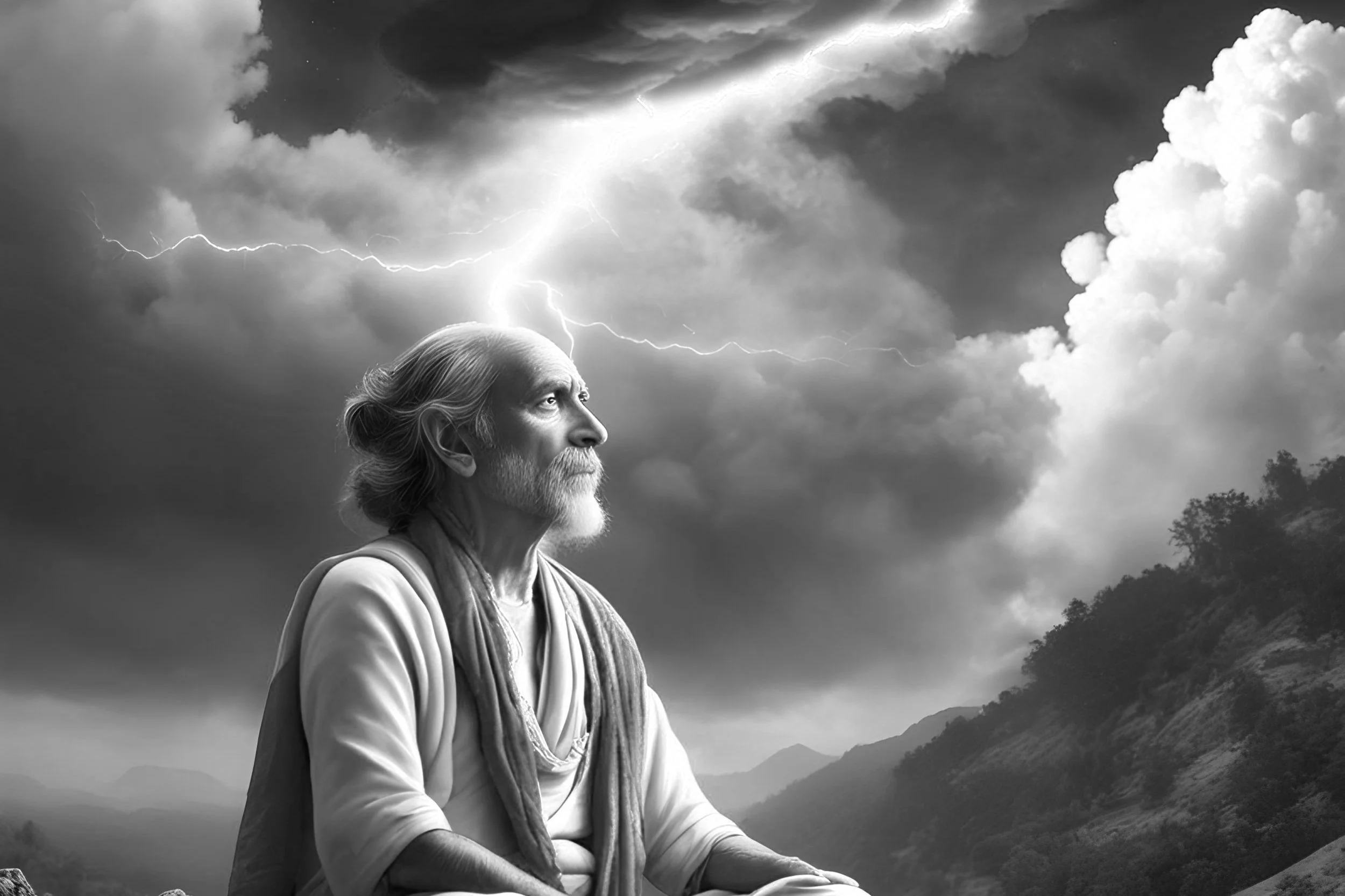Why Aren’t We Meditating as a Species?
It’s been 5,000 years!
From those preliminary, isolated experiments harnessing fire 2 million years ago, it took 1.6 million years for fire use to become commonplace to our species. This gap in time indicates that even brilliant discoveries, despite unprecedented value, still take enormous amounts of time to assimilate. Yoga, nirvana, meditation, and the revelations of the body-mind connection (BMC) are no different.
Mass adoption depends on two factors, the value of the discovery and the ease with which it can be learned or manufactured. When a discovery has little value or is valuable but too difficult to create or understand, it's less likely to be adopted. Over the last few decades, the recent uptick in technological innovation and the potential billions of dollars in profit on the table have inspired corporations to study the phenomenon of tech adoption. With new terms and statistics, it's been discovered that innovators and early adopters make up 16% of the population. In comparison, the next 64% of the population are either called the early majority or late majority adopters. Laggards are the final 16%, who only adopt once the innovation is the status quo. Innovators and early adopters are trendsetters and explorers who enjoy dabbling with unproven but novel new tools. The early and late majority adopters are driven by rationality versus genuine curiosity and adopt the technology only when there is a valid reason and proof that the tech works.
Where are we now, in terms of the technology of the body-mind connection, the skill of meditation, and the resulting wakefulness? In the United States, the numbers of meditators vary between age groups but range from 13-15% indicating that meditation is still a fledgling technology only being experimented with by innovators and early adopters. For it to catch on in the early and late majority crowds there must be an undeniable need and proof that mastering the body-mind connection (BMC) and meditation work.
And even then, it is not enough. Not all technologies, even if they're inarguably valuable, are adopted. There are important factors that prevent a tool or behavior from being accepted by the masses.
For example, of the 7,097 recorded languages spoken today, roughly 3,349 have no associated written form and are purely oral languages. The first written language, cuneiform, was developed by the Sumerians of Mesopotamia in 3,200 BC. It's roughly 5,500 years later and still half of the languages spoken on earth have not developed a written component. Despite the value of the written word, these cultures have bypassed that tool for millennia because the work involved in creating a new writing system or assimilating another was too costly, difficult, or unnecessary. When it comes to the practice of mastering the BMC as a behavioral technology, the same concerns regarding cost, difficulty, and necessity exist in the speed and spread of its adoption.
Is meditation necessary? This is the value that should eventually inspire the early adopters. In 2022, 66% of young adults aged 18–24 reported stress-related symptoms, compared to 25% of those aged 65 and older. Match this with another stat that of this stressed 66% of young adults, 16% had self-harmed and 32% said they had had suicidal thoughts and feelings.
It appears to be self-evident that at this point in the human story, as modern humans deal with the phenomenon of civilization, stress management and general awareness of one's mind are skills shifting from beneficial to necessary.
So, if there is plausible value to meditation, is the proposed mastery of the BMC and the resulting "delicacy" experience, as Ikkyu the Zen monk describes it, of wakefulness, aka nirvana, aka mindfulness, aka enlightenment too difficult for early majority and late majority adopters?
Some say, “Yes.”
Some say, "No."
Zen explicitly states as a hallmark of the philosophy that "the path of zen is easy." Wakefulness, nirvana, mindfulness, and enlightenment are all simple according to these specific sects of Eastern spirituality. The counterintuitive sentiment of these philosophies is simple enough. Being enlightened is easy. Suffering is difficult.
The sentiment that enlightenment is easy is undeniably uplifting, especially to the innovators and early adopters who care to learn the daunting, new, and untested skill. But the idea that mastery of meditation, the body, and the mind is an easy thing can project a false image of the experiential journey. The reality is all skills, including the skill of waking up to one's inner nature are easy, as Zen proclaims, only after they've been mastered and agency is attained. Learning skills, however, always takes some amount of time and, more often than not, demands guidance. While not all skills are equally difficult or attainable, as long as there are regular attempts at understanding the tool and effort made towards becoming better at it, mastery is guaranteed in time but not necessarily a single life time. Some skills are the endeavors of generations. Whether it is the group of the individual, this is what it means to practice.
As a response to the lineages that held enlightenment as an arduous and complex process, certain meditative subcultures like Zen proclaimed the opposite. It was all easy. Unfortunately, simplifying the ethos of the entire Eastern mystical world into bit-sized zingers only mystified seekers and enthusiasts more. The point can be made that these zingers were tests to qualify the novice meditator but if that’s the case, it’s not so easy. Either way, the simplest Zen instructions were too simple, notoriously taking months if not years for the confounded enthusiast of enlightenment to grasp.
"What is Buddha?" such an enthusiast once asked their master.
"3.5 ounces of flax," responded the master.
“WTF?” thought the student.
Zen isn't the only meditative school that endorses the sentiment that wakefulness is easy. Vajrayana Buddhism is a Tibetan school of Buddhism, distinct for emphasizing the belief that enlightenment is our essential nature. Vajra means lightning bolt in Sanskrit and represents the bright, glowing crack of waking up to the mind. The detail is that this lightning bolt of wisdom exists in all people innately. Like Prince 5 Weapons who carried the vajra in his belly and defeated the big bad ogre, Sticky Hair, because of it, all humans across time carry this fire within. While the utility of our enlightenment is commonly experienced in our small, forgettable moments of peace and mental quiet, it's rarely recognized for what it is. Like lightning, the flash of that normal enlightenment is quick and easy to miss, especially since it's so close and subtle. But, those many flashes of enlightenment are what help us defeat the ogres in the existential woods.
Zen seems to always have an appropriate, witty statement. As some monk once said in mesmerizing chillness, "No one said you'd be aware of your own enlightenment."
So, if meditation is both plausibly necessary and easy enough to learn, why is it still only of interest to the innovators and early adopters 5,000 years later? The only remaining reason is the cost. Everything has a price and the price of enlightenment is nothing less than everything.

